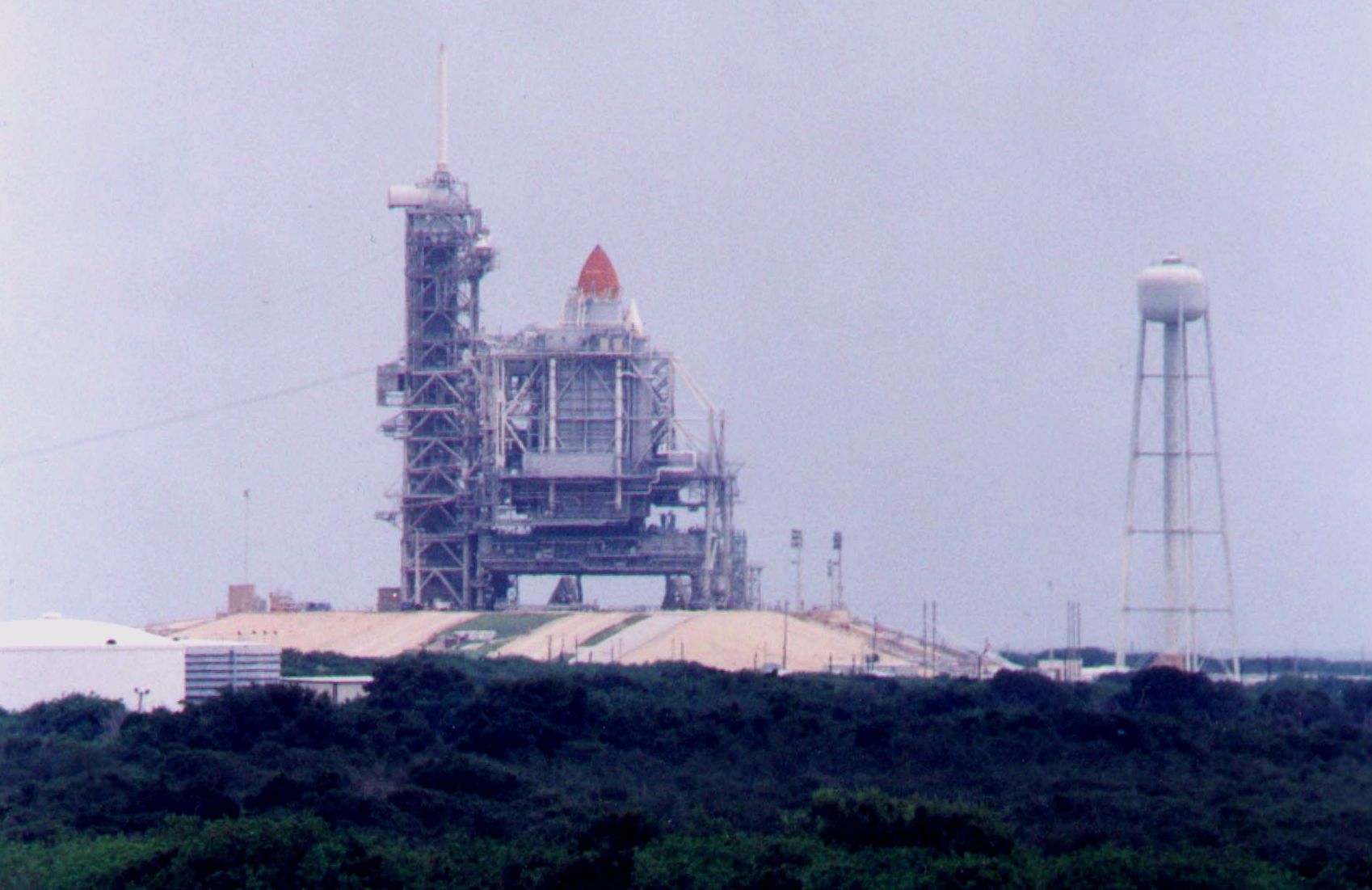

Chandra (formerly the Advanced X-ray Astrophysics Facility, AXAF) is the third of the NASA "Great Observatories (along with Hubble, the Compton Gamma-Ray Observatory, and SIRTF, planned for launch in 2002). It represents a huge leap for X-ray astronomy, comparable to Hubble's advance in angular resolution. Its smooth nested mirrors deliver 0.5-arcsecond image quality for imaging and spectroscopy, with a variety of observing modes possible. The observatory was deployed in low orbit from the shuttle Columbia on STS-93, seen above on the pad shortly before launch (best I could manage for this one, folks). An Inertial Upper Stage then fired several times to leave it in a 64-hour orbit ranging from 10,000-140,000 km from Earth. Not coincidentally, this is much like the orbit selected by the European Space Agency for XMM-Newton. Such orbits spend a lot of time beyond the Van Allen belts, which interfere strongly with the detectors, and are high enough that the Earth blocks very little of the sky, so that long uninteruupted observations can be made. This kind of orbit also makes servicing unfeasible with present human spaceflight, so, as one of the project managers said, they had only one chance to get it right.
As with several other instruments, our group (now including X-ray black belt Ray White III) is observing the field around the radio galaxy 53W002 at z=2.4 using Chandra. The objective now was to see whether the galaxies have had time to heat and chemically enrich surrounding hot gas, such as now accompanies even modestly rich clusters. I've cheated a bit in posting this, since the observations are scheduled but not yet actually obtained.
Last changes: 8/2001 © 2001